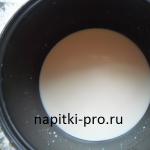Sufficient level of illumination. Insufficient lighting contributes to the rapid manifestation of fatigue and can lead to the development of myopia due to the need to look at an object, bringing it too close to the eyes.
Sufficient uniformity of illumination. When moving the gaze from one brightness to another, even with short-term irritation, the eye must adapt to the new lighting regime for some time (adapt), and until this process is completed, the sensitivity of the eye is relatively reduced. In addition, a short-term shift of gaze to brighter surfaces than the one to which it is always directed immediately causes a constriction of the pupil, and the latter does not immediately return to normal. Constriction of the pupil reduces the amount of light entering the eye, worsening and slowing down the recognition of detail. Therefore, the use of local lighting alone is physiologically inappropriate, especially in cases where, in the course of precise work under visual control, it is necessary to switch the gaze to adjacent low-lit surfaces. Forced frequent readaptation often leads to a decrease in the performance of the eye, slower working movements and missed defects.
Providing protection from glare sources. Shifting your gaze to high brightness increases the degree of tension in the nervous and muscular apparatus and reduces its performance. After looking at high brightness, so-called sequential images remain, which are superimposed in the form of a veil on the objects in question and impair visibility. As a result of blindness, an unpleasant sensation occurs that negatively affects the state of the central nervous system: in this case, significant excitation of the cerebral cortex in the area of the visual analyzer is replaced by a predominance of inhibition processes, resulting in a decrease in performance. Open lamps must not be used in lighting installations. It is also necessary to observe the minimum permissible heights for hanging lamps.
Choosing the right light source. In the process of work, especially related to the external inspection of products made of non-ferrous metal, non-ferrous fabrics, etc., the discrimination of defects depends on the spectral composition of the light source. Thus, if it is necessary to distinguish colors and their shades on fabric or leather, it is advisable to use fluorescent lamps, and when identifying defects on non-ferrous metal, the best visibility is created in light as a result of the combined action of mercury lamps and incandescent lamps.
Correct choice of light direction. The practice of industrial lighting indicates the very important importance of the direction of light. When distinguishing relief objects (details), the correctly chosen direction of light allows you to artificially increase the contrast and increase the size of the object due to its own shadows and thereby improve the conditions for visual work. In addition, with the correct direction of light, it is possible to eliminate falling shadows from equipment and workers, thereby increasing the illumination of the working surface and improving the conditions for distinguishing objects.
Ensuring the stated requirements for rational lighting helps maintain a high level of eye performance and reduce worker fatigue, and consequently, increase labor productivity and improve product quality. The above physiological and hygienic requirements are taken into account in the norms and rules of rational lighting.
Daylight.
All educational premises must have natural lighting in accordance with the hygienic requirements for natural, artificial, and combined lighting of residential and public buildings.
Without natural lighting it is allowed to design: squat rooms, washrooms, showers, toilets in the gymnasium; showers and toilets for staff; storerooms and warehouses, radio centers; film and photo laboratories; book depositories; boiler rooms, pumping water supply and sewerage systems; ventilation and air conditioning chambers; control units and other premises for installation and management of engineering and technological equipment of buildings; premises for storing disinfectants.
In classrooms, natural left-side lighting should be designed. When the depth of classrooms is more than 6 m, it is necessary to install right-side lighting, the height of which must be at least 2.2 m from the floor.
The direction of the main light flux in front and behind the students is not allowed.
In workshops for labor training, assembly and sports halls, two-way side natural lighting can be used.
In the premises of educational institutions, normalized values of the natural illumination coefficient (NLC) are provided in accordance with the hygienic requirements for natural, artificial, and combined lighting of residential and public buildings.
In classrooms with one-way side natural lighting, the KEO on the working surface of the desks at the point of the room farthest from the windows should be at least 1.5%. With two-way side natural lighting, the KEO indicator is calculated on the middle rows and should be 1.5%.
The luminous coefficient (LC - the ratio of the area of the glazed surface to the floor area) must be at least 1:6.
The windows of classrooms should be oriented to the southern, southeastern and eastern sides of the horizon. The windows of drawing and painting rooms, as well as the kitchen room, can be oriented towards the northern sides of the horizon. The orientation of computer science classrooms is north, northeast.
Light openings in classrooms, depending on the climate zone, are equipped with adjustable sun-shading devices (tilt-and-turn blinds, fabric curtains) with a length not lower than the level of the window sill.
It is recommended to use curtains made from light-colored fabrics that have a sufficient degree of light transmission and good light-diffusing properties, which should not reduce the level of natural light. The use of curtains (curtains), including curtains with lambrequins, made of polyvinyl chloride film and other curtains or devices that limit natural light, is not permitted.
When not in use, curtains must be placed in the walls between the windows.
To rationally use daylight and uniformly illuminate classrooms, you should:
Do not paint over window glass;
Do not place flowers on window sills; they are placed in portable flower boxes 65 - 70 cm high from the floor or hanging flowerpots in the walls between the windows;
Clean and wash glass as it gets dirty, but at least twice a year (autumn and spring).
The duration of insolation in classrooms and classrooms must be continuous, with a duration of at least:
2.5 hours in the northern zone (north of 58 degrees N);
2.0 hours in the central zone (58 - 48 degrees N);
1.5 hours in the southern zone (south of 48 degrees N).
It is allowed that there is no insolation in classrooms for computer science, physics, chemistry, drawing and drawing, sports gyms, catering facilities, assembly halls, and administrative and utility rooms.
Artificial lighting
In all premises of a general education institution, levels of artificial illumination are provided in accordance with the hygienic requirements for natural, artificial, and combined lighting of residential and public buildings.
In classrooms, the general lighting system is provided by ceiling lamps. Fluorescent lighting is provided using lamps according to the color spectrum: white, warm white, natural white.
Lamps used for artificial lighting of classrooms must provide a favorable distribution of brightness in the field of view, which is limited by the discomfort indicator (Mt). The discomfort index of a general lighting lighting installation for any workplace in a classroom should not exceed 40 units.
Fluorescent lamps and incandescent lamps should not be used in the same room for general lighting.
In classrooms, classrooms, laboratories, illumination levels must comply with the following standards: on desktops - 300 - 500 lux, in technical drawing and drawing rooms - 500 lux, in computer science classrooms on tables - 300 - 500 lux, on a blackboard - 300 - 500 lux, in assembly and sports halls (on the floor) - 200 lux, in recreation (on the floor) - 150 lux.
When using computer technology and the need to combine the perception of information from the screen and writing in a notebook, the illumination on students’ desks should be at least 300 lux.
A general lighting system should be used in classrooms. Lamps with fluorescent lamps are located parallel to the light-carrying wall at a distance of 1.2 m from the outer wall and 1.5 m from the inner wall.
A blackboard that does not have its own glow is equipped with local lighting - spotlights designed to illuminate blackboards.
When designing an artificial lighting system for classrooms, it is necessary to provide for separate switching of lamp lines.
For the rational use of artificial light and uniform illumination of classrooms, it is necessary to use finishing materials and paints that create a matte surface with reflection coefficients: for the ceiling - 0.7 - 0.9; for walls - 0.5 - 0.7; for the floor - 0.4 - 0.5; for furniture and desks - 0.45; for chalkboards - 0.1 - 0.2.
It is recommended to use the following paint colors: for ceilings - white, for walls of classrooms - light tones of yellow, beige, pink, green, blue; for furniture (cabinets, desks) - the color of natural wood or light green; for chalkboards - dark green, dark brown; for doors, window frames - white.
It is necessary to clean the lighting fixtures of the lamps as they become dirty, but at least 2 times a year, and promptly replace burnt-out lamps.
Faulty, burnt-out fluorescent lamps are collected in a container in a specially designated room and sent for disposal in accordance with current regulations.
Artificial lighting should be sufficient, uniform, without glare or shadows. It can be general, local combined. At catering establishments, as a rule, general lighting of production premises is used, which should provide uniform illumination of the entire room, and for better illumination of workplaces, general localized lighting with luminous flux distribution. At distribution points, in confectionery shops, and in administrative premises, it is most rational to use combined lighting, combining general and local. The use of local lighting only is not allowed.
The light sources used are mainly fluorescent or incandescent lamps. Preference should be given to fluorescent lamps.
Fluorescent lamps produce light similar in spectrum to daylight; they are more economical due to greater light output with low thermal radiation and a longer service life compared to incandescent lamps. The disadvantages of fluorescent lamps include pulsation of the light flux, which results in a stroboscopic effect when moving and rotating parts of mechanisms are perceived as stationary, which leads to injury. In low light conditions, fluorescent lamps give a “twilight” effect, so when using them, a high level of illumination is required. Incandescent lamps are significantly inferior to fluorescent lamps in terms of hygienic indicators: their filament brightness is higher than acceptable for the eyes, they give a high thermal effect, the light of these lamps differs sharply from daylight.
Lamps, according to the nature of the lighting fixtures and the distribution of the light flux, are divided into predominantly direct light (60...80% of the flux is directed downwards), diffused light (uniform distribution of the flux) and predominantly reflected light (60...80% of the flux is directed upwards). Direct light fixtures are more often used. They illuminate work surfaces well, but produce harsh shadows. Lamps of diffused and reflected light can be used provided that the ceiling and walls have a reflectance of at least 60%.
To illuminate industrial premises and warehouses, lamps equipped with moisture and dust protection equipment are used. To avoid glass fragments getting into food at catering establishments, it is not allowed to illuminate production premises with lamps open at the bottom. Lighting fixtures must have protective fittings and must be cleaned and washed regularly.
Workplaces should not be shiny. Fluorescent lamps placed in rooms with rotating equipment (universal drives, cream whipping machine, dough mixers, circular knives) must have lamps installed in antiphase. General lighting fixtures are placed evenly throughout the room. Lamps are not placed above stoves, technological equipment, or cutting tables. If necessary, workplaces are equipped with additional lighting sources.
Illumination indicators for industrial premises must comply with established standards. To determine illumination, a special device is used - a lux meter.
In accordance with hygienic requirements, the illumination on a horizontal plane at a level of 0.8 m from the floor should be (in lux):
in confectionery shops and dispensers - 300;
in dining rooms (except restaurants), buffets, hot and cold shops, pre-cooking and procurement shops, washing kitchen and tableware - 200;
containers in loading and storage rooms - 75;
In vegetable pantries and refrigerated chambers, when using incandescent lamps, an illumination of 20 lux (at floor level) is allowed. In administrative premises, illumination at a level of 0.3 m from the floor should be 200 lux, and in lobbies, cloakrooms, and main corridors - 75 lux (at floor level).
Cylindrical illumination, which characterizes the saturation of the room with light, in dining rooms, on visitors’ tables and on dance floors should be at least 75 lux. The discomfort index is also normalized to assess brightness when the field of view is unevenly bright. It should be no more than 60% for all premises except the confectionery shop. For this workshop, the discomfort rate should not exceed 40%.
The light pulsation coefficient is an important criterion for assessing the performance of fluorescent lamps and should be no more than 15...20% for different premises of the enterprise.
The levels of illumination in the premises of a public catering establishment are examined during production control (at least once a year).
Daylight.
The intensity of natural light is influenced by: geographic latitude, season, time of day, cloudiness, dustiness of the atmosphere, orientation of the building, proximity and size of shading objects, area, location and shape of windows, color of walls, ceiling, floor, furniture, room depth, room area and etc.
To hygienically assess natural lighting, I use the following indicators:
Index
Characteristic
Luminous coefficient
Ratio of glazed window surface to floor area
Living quarters - 1:8 - 1:10. School classes -1:4-1:5
Angle of incidence.
Angle of incidence of light rays relative to the horizontal plane
Hole angle
The angle between the top border of the window and the roof of the opposing building (the part of the sky visible from the window)
Depth coefficient
The ratio of the length (depth) of the room to the height of the window
Not less than 2.5
Daylight factor (NLC)
The ratio of illumination at a given point in the room to simultaneous external illumination (in the shade), expressed as a percentage.
In residential premises - at least 0.5% 1 m from the wall opposite the windows. In classes - at least 1%.
Artificial lighting.
Requirements for artificial lighting:
1) Sufficiency
2) Proximity in spectrum to natural light
3) Uniform distribution
4) No glare
5) No side effects
6) Cost-effective
Artificial light sources:
1) Fluorescent lamps. The spectrum is close to natural light, economical, and provides uniform illumination. Disadvantages - slight noise, stroboscopic effect (pulsation of light flux)
2) Incandescent lamps. Less economical, not close in spectrum to natural light, but do not have the disadvantages of fluorescent lamps. They are used more often, especially in domestic conditions.
Lighting systems:
1) General lighting. This is done using lamps attached to the ceiling. Lamps can be
1. Direct light. All the light comes straight down, creating shadows, uneven illumination, and causing glare.
2. Reflected light. The light goes to the ceiling (due to the lampshade) and is reflected downwards from it. The most favorable (soft, uniform light), economically unprofitable.
3. Scattered (half-reflected) light - the most common. They provide uniform illumination in all directions and satisfy economic requirements.
2) Local lighting. Creates illumination (on the illuminated surface), which should exceed in strength the general illumination of the surrounding space (no more than 10 times, since with strong contrast the eyes do not have time to adapt to the lower illumination during breaks in work and fatigue occurs).
3) Combined lighting (local + general)
4) Mixed - (artificial + natural) - the most common and favorable.
Standards for general artificial lighting:
Illumination is normalized. At the same time, the illumination standards for fluorescent lamps are 2 times lower than for incandescent lamps.
Lighting standards in various (non-hospital) rooms:
Room
Incandescent lamps
Fluorescent lamps




